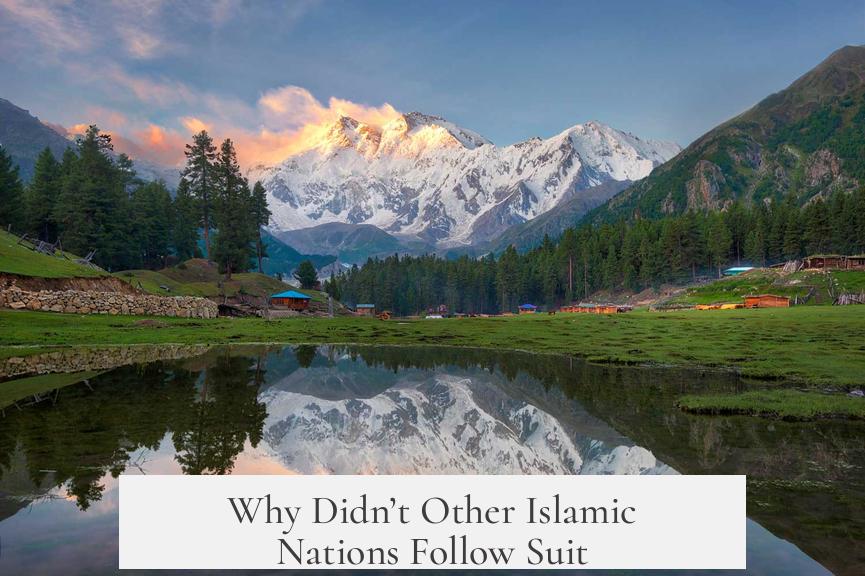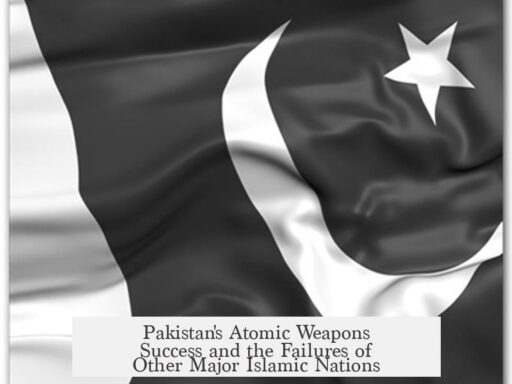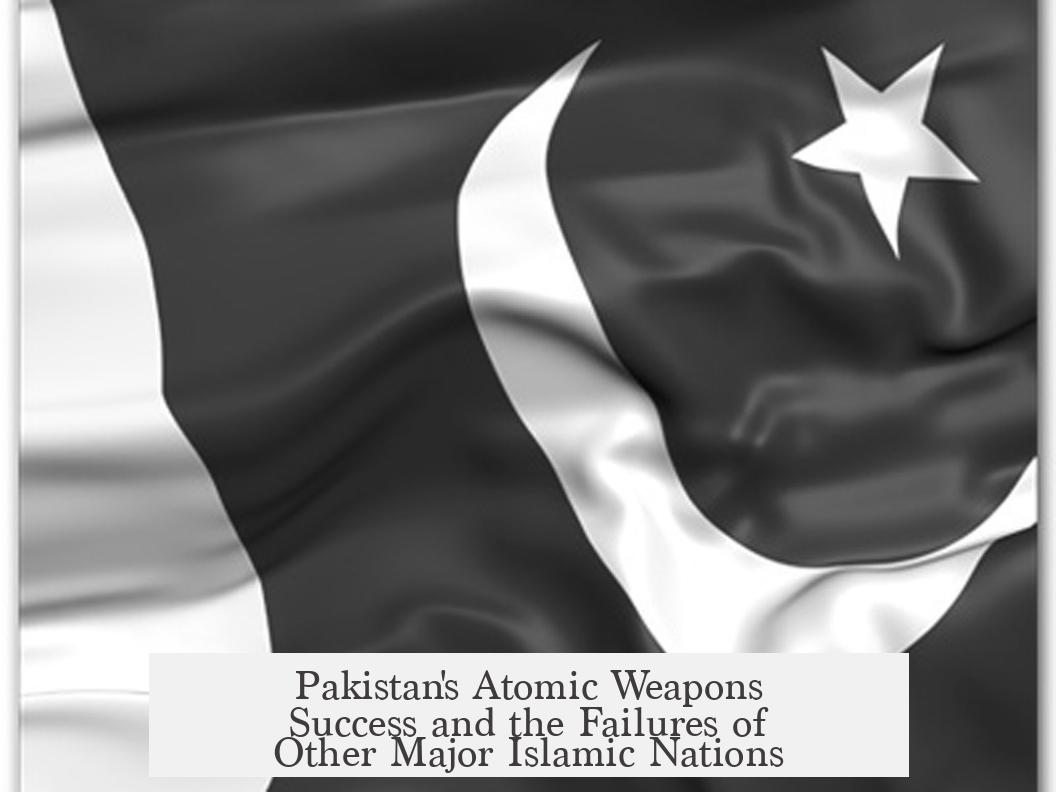Pakistan has successfully produced atomic weapons through decisive political will, technological acquisition, and strategic autonomy, while other major Islamic nations in the region have not reached this milestone due to different motivations, international commitments, and operational constraints.
Pakistan’s nuclear weapons program began as a direct response to India’s nuclear test in 1974. After India detonated its “Smiling Buddha” device, Pakistan’s political leadership, led by Zulfikar Ali Bhutto, vowed to develop its own bomb regardless of the hardships involved. Bhutto famously declared Pakistan would “eat grass and leaves for a thousand years” if necessary to match India’s nuclear capability. This strategic context formed the foundation for Pakistan’s determined pursuit of atomic weapons. In contrast, other Islamic nations in the Middle East and region have not declared similar overt ambitions for nuclear weapons.
Pakistan also distinguished itself by refusing to sign the Non-Proliferation Treaty (NPT), a key international agreement aimed at limiting nuclear weapons development. This allowed Pakistan to pursue its nuclear objectives outside the diplomatic and legal frameworks that constrain many other nations. Most Middle Eastern countries, including Iran and Gulf states, have signed the NPT and maintain policies that focus on civilian nuclear energy rather than weapons development. Their adherence to international norms limits overt nuclear weapons programs.
Technology acquisition played a critical role in Pakistan’s success. Dr. Abdul Qadeer Khan, known as the father of Pakistan’s bomb, dramatically accelerated uranium enrichment capabilities after 1975. Khan clandestinely obtained centrifuge blueprints and uranium enrichment designs from the Dutch company URENCO, which manufactures key nuclear components. This transfer of technology provided Pakistan an indigenous nuclear fuel production capacity critical for weaponization. Khan established the Engineering Research Laboratory (ERL) specifically focused on uranium enrichment. In the 1980s, Pakistan supplemented indigenous efforts by acquiring Chinese nuclear weapon designs and entering technology exchanges with countries like North Korea, Libya, and Iran.
- Khan’s independent control over uranium enrichment allowed Pakistan to develop nuclear fuel autonomously.
- Access to international networks for equipment and material supply sustained program momentum despite sanctions.
- Pakistan accumulated enough highly enriched uranium for weapons by the late 1980s.
External politics also influenced Pakistan’s nuclear program development. While the US and Western powers imposed sanctions to deter proliferation, they also balanced regional power considerations. In 1978, the US waived certain nuclear restrictions to supply Pakistan with nuclear fuel, aiming to maintain regional stability against Soviet influence. After 9/11, sanctions were lifted to gain Pakistani cooperation in counterterrorism, indirectly enabling continued nuclear progress. This pragmatic international environment contrasts with the harsher pressures and constraints faced by other Islamic nations, which lacked similar geopolitical incentives or partnerships that might ease technological acquisition.
In the Middle East, aside from Pakistan, nuclear ambitions remain cautious or covert. Iran, though suspected of pursuing nuclear weapons, officially states its program is civilian, aiming to develop “threshold capabilities” that allow rapid weaponization if necessary. Saudi Arabia and Gulf states have hinted at nuclear interest conditioned on developments by rivals but have not declared formal programs. Iraq’s earlier nuclear efforts under Saddam Hussein failed due to rushed timelines and technical problems, illustrating governance and management challenges that hindered program success. Many Islamic nations lack the political resolve, indigenous technical expertise, or international access necessary to replicate Pakistan’s model.
Pakistan demonstrated its nuclear capabilities publicly with tests in May 1998, shortly after India’s own tests. Conducting these tests confirmed Pakistan as a nuclear weapons state and established a deterrent balance in South Asia. No other Islamic nation in the region has reached this stage of confirmed nuclear weapons capability.
| Factor | Pakistan | Other Major Islamic Nations |
|---|---|---|
| Political Will | Strong, driven by India’s nuclear test and national security | Largely cautious or covert, no public weapons declarations |
| NPT Status | Not a signatory, allowing weapons development | Most are signatories, limiting weapons programs |
| Technology Acquisition | Clandestine acquisition of uranium centrifuge and Chinese designs, indigenous enrichment | Limited access, mostly civilian nuclear technology focus |
| External Support | Indirect US support during Cold War, pragmatic lifting of sanctions | Subject to sanctions and international pressure |
| Program Management | Centralized leadership via Abdul Qadeer Khan and PAEC | Inconsistent, plagued by poor management and rushed projects (e.g., Iraq) |
Key Takeaways:
- Pakistan’s nuclear weapons program grew out of strategic necessity after India’s 1974 test.
- Refusal to sign the NPT enabled Pakistan to pursue nuclear weapons without international legal constraints.
- Dr. Abdul Qadeer Khan’s acquisition and development of uranium enrichment technology was crucial.
- Political autonomy and international pragmatism allowed Pakistan to maintain program progress despite sanctions.
- Other Islamic nations generally adhere to the NPT and lack comparable political will or technological acquisition to produce atomic weapons.
How Has Pakistan Accomplished Producing Atomic Weapons, While Other Major Islamic Nations have Failed?

Pakistan managed to build nuclear weapons through a potent mix of determined leadership, clever technology acquisition, and strategic geopolitical positioning while other Islamic nations lagged behind due to cautious policies, adherence to treaties, and lack of indigenous capabilities. That’s the nutshell answer, but let’s peel this nuclear onion carefully.
Why did Pakistan, unlike many of its Islamic neighbors, succeed in producing atomic weapons when the stakes and challenges were so high? It all starts with the motivation and environment in which Pakistan approached the nuclear question.
A Drive Born of Defeat and Determination
In 1971, Pakistan faced a painful defeat with the secession of East Pakistan (now Bangladesh). This loss wasn’t just territorial; it was a psychological and strategic blow. Then, in 1974, India conducted a nuclear test dubbed the “Smiling Buddha.” By then, Pakistan’s political leader Zulfikar Ali Bhutto famously declared:
“If India builds the bomb, we will eat grass and leaves for a thousand years, even go hungry, but we will get one of our own. The Christians have the bomb, the Jews have the bomb and now the Hindus have the bomb. Why not the Muslims too have the bomb?”
This statement was not empty rhetoric—it mattered. It showcased Pakistan’s resolve to achieve nuclear deterrence in its own terms, signaling a long-term commitment. Unlike many Islamic nations, Pakistan did not hesitate to reject the Non-Proliferation Treaty (NPT), understanding that signing it would restrict its nuclear ambitions. This strategic positioning set Pakistan apart early on.
The Game-Changer: Dr. Abdul Qadeer Khan’s Bold Moves

The story would be incomplete without Dr. Abdul Qadeer Khan, often hailed as the “Father of Pakistan’s nuclear bomb” or “Mohsin-e-Pakistan” (Benefactor of Pakistan). Khan’s journey from working with a Dutch uranium enrichment giant, URENCO, in the 1970s to becoming a pivotal figure in Pakistan’s nuclear program is fascinating.
In 1975, Khan, under a cloud of suspicion in Europe for potentially illicit activities, returned to Pakistan with stolen blueprints for centrifuges—the critical components for enriching uranium—and a web of contacts from nearly 100 companies supplying nuclear technology parts. His expertise helped Pakistan leapfrog many scientific hurdles. When Bhutto gave Khan autonomous control over the uranium enrichment program, Khan established the Engineering Research Laboratory (ERL), focusing on creating Pakistan’s indigenous uranium enrichment capacity.
Moreover, Pakistan benefited from technological blueprints not just from Europe but also from China. Khan acquired Chinese nuclear designs tested in 1966, boosting Pakistan’s ability to develop a bomb based on proven models.
Global Politics, Sanctions, and Pragmatism
Pakistan’s nuclear path was also shaped by external influences and cold-blooded geopolitics. In 1978, despite Pakistan’s refusal to sign the NPT, the U.S. waived restrictions and supplied nuclear fuel to Pakistan. The American rationale? Keep Pakistan stable as a buffer against Soviet expansion during the Cold War.
Sanctions attempted to slow down Pakistan’s nuclear ambitions but failed to halt them. The U.S. and other powers often prioritized regional balance over nuclear non-proliferation, implicitly tolerating Pakistan’s program to counterbalance India’s growing power. After 9/11, U.S. sanctions were lifted completely in recognition of Pakistan’s strategic role in the “War on Terror.”
Why Didn’t Other Islamic Nations Follow Suit?

Here’s where the plot thickens. When we look at other Islamic nations in the Middle East — such as Iran, Saudi Arabia, and Egypt — their nuclear ambitions have been much more muted, often unofficial, and mostly regulatory-bound.
- None of these countries have publicly declared an intention to develop nuclear weapons. Instead, they have generally signed on to the Non-Proliferation Treaty and adhered to its terms.
- Some hinted at nuclear ambitions — Saudi Arabia suggested withdrawing from the NPT if its neighbors got bombs — but have not taken explicit steps to build weapons.
- Attempts like Saddam Hussein’s Iraqi nuclear program floundered because of unrealistic deadlines, internal sabotage, and poor project management rather than lack of interest.
- Iran focuses on becoming a “threshold” state, capable of quick weaponization if needed, but it publicly denies seeking nuclear weapons outright.
Why this difference? Simple: Pakistan’s leadership made an explicit decision backed by political will, long-term planning, and autonomy over its secretive technological networks. Contrast that with many Middle Eastern regimes where bureaucracy, fear of sanctions, and a desire to maintain international legitimacy tempered overt nuclear development.
Concrete Milestones of Pakistan’s Nuclear Journey
A nuclear program is not just about ambition—it’s about delivery and demonstration. When India conducted its nuclear tests in May 1998, Pakistan was ready. Less than three weeks later, Pakistan’s own nuclear tests responded loudly and clearly to the region and the world.
This effective demonstration was a culmination of over two decades of dedicated scientific, political, and strategic effort. Pakistan showed it could not only talk about nuclear weapons but wield them as a strategic deterrent.
Lessons from Pakistan’s Nuclear Success

Pakistan’s nuclear success story offers several takeaways for nations eyeing similar ambitions:
- Leadership Matters: Without Bhutto’s tough stance and visionary declaration, Pakistan might not have pursued nukes so aggressively.
- Technology Transfer is a Game-Changer: Dr. Khan’s access to centrifuge blueprints and Chinese nuclear designs was critical to leapfrogging domestic research limitations.
- Domestic Autonomy: Giving Khan autonomous control allowed rapid progress without bureaucratic bottlenecks or external interference.
- International Politics: Strategic calculations by powers like the U.S. created an environment where Pakistan’s nuclear ambitions were tolerated if not implicitly supported.
Final Thoughts: Beyond the Bombs
Producing atomic weapons is not just a nuclear physics feat; it’s a tale of political willpower, covert maneuvers, strategic patience, and leveraging global geopolitics. Pakistan’s nuclear journey is unique in combining these elements effectively amid the complexities of the Muslim world and global diplomacy.
Most Middle Eastern Islamic nations never publicly committed themselves to such ambitions or lacked the mix of internal autonomy and external opportunities Pakistan enjoyed. Their adherence to the NPT, fear of sanctions, and political instability contributed to their failure to cross the nuclear threshold.
So, next time someone asks why Pakistan succeeded where others did not, remember this: it wasn’t just about technology or faith. It was about grit, savvy leadership, scientific daring, and playing the global chessboard with a remarkable combination of patience and nerve.




